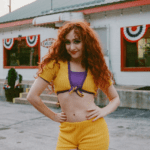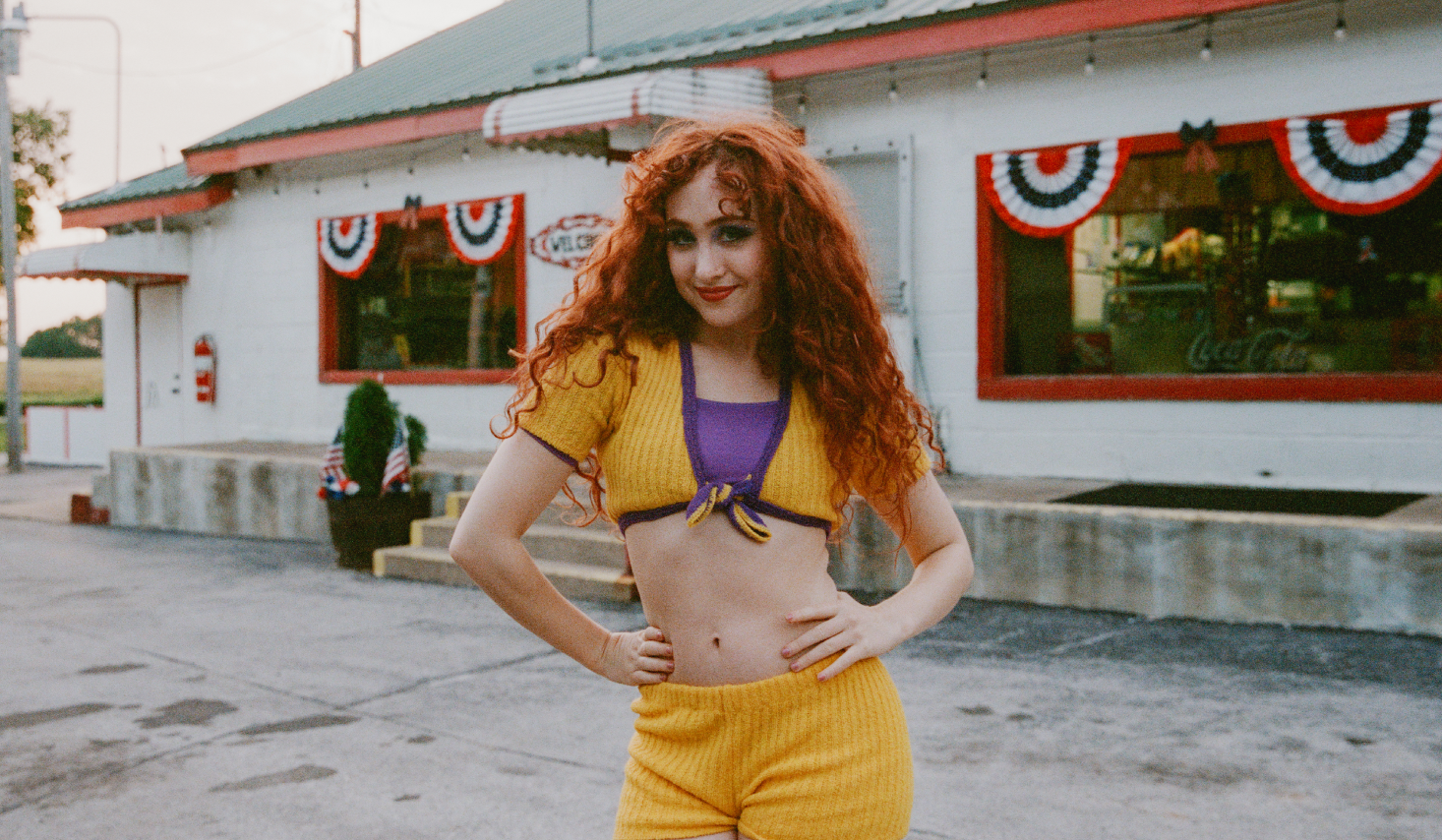
For Just Like Us ambassador Deia Penn, Chappell Roan’s success is a reminder that queer women “deserve to take up space in our own community”.
WORDS BY DEIA PENN

At 14-years-old I knew who I was. I had been raised near Manchester on a diet of old Hollywood films and Project Runway re-runs, and surrounded by women who do femininity in the loudest, brightest way possible. I wanted to grow up to be one of these women, wielding hyper-femininity like a flick-knife. I also knew that I only wanted to be in relationships with other women.
The problem was that I wasn’t sure that I was allowed to be both.
I had searched the internet for queer women and had come back disappointed. These women all seemed so serious, and even the femme ones had an androgynous edge. I couldn’t see myself anywhere.
The only time I saw my kind of femininity in LGBTQIA+ media was on Drag Race, where I saw a femininity that was allowed to take up space without apologising. Here, I thought, were the bolshy, glittery, political queers.
This was clearly where I belonged. I started engaging with my local drag scene, expecting to find a place where people shared my love of the hyper-feminine. But in a space where femininity is performance, little love exists for women, both cis and trans, who live their femininity all the time.
Even though women and AFAB people have been involved in drag since the beginning, our community still sees camp, and by extension, drag, as the birthright of gay men. Queer women are only accepted if they’re masculine enough to be seen as ‘properly’ queer, and femmes are conflated with straight women, as if all femininity was inherently heterosexual.
And then comes Chappell Roan. Like me, her own hyper-femininity is bundled up in her love for women. She’s an ode to what’s magic about femininity, in high heels and big hair.
Like the women I idolised growing up, she takes up space. She’s in drag, like the queens I loved as a teenager. Most importantly, she’s reclaiming the language of drag and high camp for herself. She’s now one of the world’s most famous drag queens, and she’s a queer woman.
Recently I got dressed up to go to a party, and the first thing anyone asked me was, “Can I say Chappell Roan?” Finally, there’s a frame of reference for hyper-femininity as a way of expressing a queer, female identity. It feels a little like being seen.
And she’s using the language of camp to tell stories about queer women. Here, at last is the lesbianism I looked for as a teenager, joyful and political and brightly coloured and, most importantly, fun.
She revels in it, from the feeling of meeting a woman in a club to the thrill of kissing a girl for the first time. She rejects heterosexuality in favour of a hypothetical ‘Super Graphic Ultra Modern Girl’ who can match her high-femme, high-camp energy.
When Chappell hits the stage in drag, and when she asks her fans to dress up, it’s more than a gimmick. For a generation of young queer women, it’s a reminder that camp is ours, and that drag is ours, and that we deserve to take up space in our own community. It’s also a reminder that being a queer woman, especially a feminine queer woman, is a sparkly, joyful thing.
Deia is ambassador for Just Like Us, the LGBT+ young people’s charity. LGBT+ and 18-25? Sign up now!
The post ‘Thanks to Chappell Roan, hyper-feminine queer women can finally take up space’ appeared first on GAY TIMES.

0 Comments